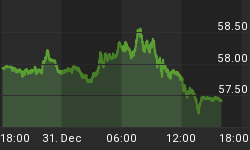The study of the stock market is always a matter of "will it" or "won't it." It's an endless study, because no sooner is the "will it" or "won't it" puzzle solved, then the next set of puzzles arrive.
Here's the way I see it. We're in a primary bear market. And overall, the stock market is overvalued. How do I know? I know because the S&P is selling at just over 34 times earnings. This is an absurd statistic. Almost all bull markets in history have topped out when the S&P sold at as high as 20 times earnings. And here's a bear market in which the S&P is selling at 34 times earnings while yielding a piddling 1.74%. Believe me, this market is overvalued.
Does that mean that the market has to turn around and plunge 50% or 70%? Obviously not. But what it does mean is that if you buy stocks here and hold those stocks, over the next 10 years you'll be very lucky to average as much as 5% total return. Furthermore, somewhere in those 10 years, you're very likely to experience a huge decline, a decline which will take stocks below "known values."
That means that anything you buy here, you must be buying on a trading basis. The conditions for "buy and hold" are extremely unfavorable at this point. In other words, whatever you're buying you're buying to sell to a "greater fool." All stock holdings at this point are speculative and risky.
The 30 Dow stocks are mainly investment-grade stocks. Not all of them can boast an A-rating, but none of them are "dogs." They are, in fact, the kind of stocks that informed investors and funds buy and hold. And it's no coincidence that these Dow stocks are the stocks that are now lagging.
My Big Money Breadth Index is actually an advance-decline line composed of the 10 largest-cap stocks in the S&P. Despite the much better breadth in the NYSE, this Index has been sliding over the past few weeks. This means that although the average stock on the NYSE has been rising, the large-cap stocks have been declining. The big boys are leaving the market.
As subscribers must know by now, I've been concentrating on the problem that the Dow has not confirmed the much better action of the Transports. We now have a flagrant non-confirmation built into the price structure of the market, this under Dow Theory.
In order to confirm the Transports, the Dow would have to close above its August 22 peak of 9053.64. This is roughly 537 points ABOVE where the Dow is today. "Will it" or "won't it"? We'll just have to wait to see.
In the meantime, there's a lot of enthusiasm around today. Money is coming back into the mutual funds, the poll of advisors shows bulls at over 54% while bears are just above 24%, and the boys and girls at CNBC are beginning to whoop it up again.
As I write this, I hear the droning voice of Alan Greenspan explaining to a batch of subservient law-makers that while the Fed has had lots of experience taming inflation (why not, they created it), the Fed has had no experience with deflation (except as they study it in Japan). I note that nobody ever asks Greenie the basic question -- which is about the Constitutionality of the Fed itself. It would be most interesting to hear Greenspan's answer to that one. I'd also like to hear Greenie on the morality of creating currency without working. But alas, I'm no Congressman or Senator.
Gold -- While I write I've been watching gold do its slow climb. Gold's not going up fast enough to excite the masses. Gold is not going up fast enough to disturb the Administration. But I note that the 50-day MA of gold, which is bullishly above its 200-day MA, has now turned up. The 200-day MA of gold stands today at 335.10 and it's rising. The 50-day MA of gold today stands at 337.70 and is now rising. Therefore, gold is now in its full bullish mode.
On-balance-volume for gold is rising and my 21-day rate-of-change index is rising. And I like this slow, persistent advance. I like an item that rises slowly while not drawing attention to itself. Of course, the gold-bugs are giving gold plenty of attention, and by June 1 a billion Chinese will be paying attention to gold (on June 1 it will be legal for the Chinese populace to buy and own gold).
















